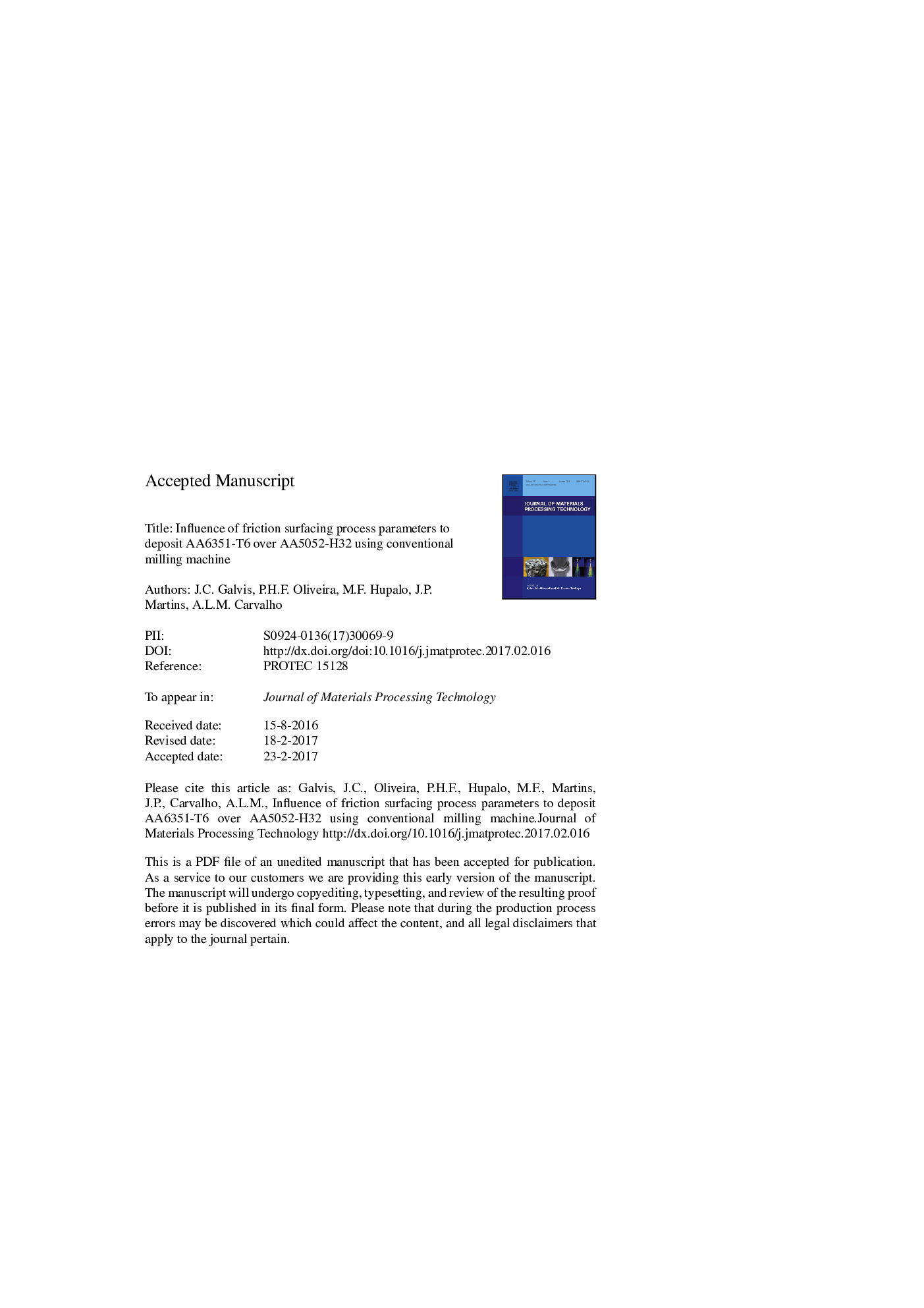| Article ID | Journal | Published Year | Pages | File Type |
|---|---|---|---|---|
| 5018052 | Journal of Materials Processing Technology | 2017 | 42 Pages |
Abstract
Superficial and microstructural characterization of the deposits was investigated. The substrate/deposit interface resistance was also investigated by bending tests and evaluating the microhardness profile. Consumable rods were deposited perpendicular to the plate rolling direction (DL); the rod rotation during the friction surfacing process was always clockwise and at room temperature. The control parameter deposition process was by the rod feed rate. Microscopic analysis has revealed the microstructural gradient transformation of the consumable rod during the friction surfacing process. Microhardness profile obtained along the rod has highlighted the presence of three distinct forming regions on the consumable material. Friction surfacing produced microstructural deposits of refined grains with 24.1% lower hardness values than those of the consumable material as received. The bending tests revealed delamination presence in the deposit/substrate interface with lower predominance for the 1A deposition process. The combination of the travel speed of 4Â mm/s and the increased rod feed rate (>Â 5.7Â mm/s) can increase the adhesive strength of the deposit/substrate interface.
Related Topics
Physical Sciences and Engineering
Engineering
Industrial and Manufacturing Engineering
Authors
J.C. Galvis, P.H.F. Oliveira, M.F. Hupalo, J.P. Martins, A.L.M. Carvalho,
